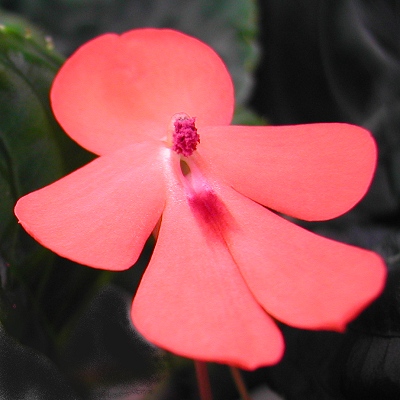| Home |
Strange Wonderful Things Rare and exotic plants |
 |
|---|
Plant the seeds when you receive them for best germination
Getting started -- You may plant the seeds in individual, small containers. Or you plant them all in a single container, but the roots may be difficult to separate later when you transplant them.
This species prefers a well-draining soil that is high in organic matter. A
typical mix is 2 parts potting soil
to 1 part
perlite
(use small- or medium-size perlite, not large chunks).
Fill the pots with soil, place a seed on top, and gently tap the side of the pot
to settle the seed between the cracks.
- If you have long-fibered sphagnum moss (not ground peat moss), sprinkle a thin layer over the pot, to retain moisture around the seeds while allowing light to reach them, which aids germination. This photo shows how much moss to use.
- If you do not have sphagnum moss, sprinkle a very thin layer of vermiculite or your soil mix over the pot (about 1/16th of an inch / 2 mm). It does not need to completely cover the surface - it's just to maintain moisture around the seeds.
Until the seeds sprout, ensure that the surface soil doesn't dry out. A propagation dome or plastic bag may be used to maintain humidity, but leave it open slightly to allow some fresh air in.
Place the containers in a bright spot out of direct sun. A bright LED bulb kept 4 inches (10 cm) away provides the right amount of light (See: "Growing indoors with LED lights").
They
sprout well at about 65 to 77 degrees F (18-25°C). I have not germinated
them outside this temperature range. I recommend placing a
minimum/maximum thermometer near the pots.
The seeds should start germinating in about 3 to 5 weeks, but may take up to 8
weeks to begin sprouting.
Lighting -- Impatiens cinnabarina usually looks best in bright shade, or filtered sunlight. It can handle more sun than that, but it will need more fertilizer and
water.
Watering -- Try to keep the soil moist, but not constantly saturated.
Don't let it dry out completely.
Fertilizing - For the first 8
weeks, give a
small amount of diluted liquid fertilizer (about 1/8 strength) once a week.
Hydroponic fertilizer is
ideal for young seedlings,
since it is easily absorbed and complete. After 8 weeks, you may switch to a granular fertilizer if you wish.
Climate -- This Impatiens prefers mild temperatures. In warmer areas, give it plenty of shade and moisture. Protect from freezing temperatures. The humidity should be
above about 40%. Indoors, if the humidity is too low, consider using an ultrasonic room humidifier, which you can buy at places like Home Depot and thrift shops.
It's normal for older leaves to occasionally turn yellow and drop, but if it seems excessive, check that the soil isn't too dry down in the root zone. If it's moist, the plant may need more fertilizer.
Transplanting -- When your plants are 2 months old, you may gently transfer them to a larger pot. Water the soil first, and avoid letting the soil ball break apart.
If you use a peat moss-based potting mix, add a dash of agricultural lime or dolomite lime (not hydrated or quick lime). Add only 1/2 teaspoon (2.5 milliliter) of lime per gallon (4 liters) of soil, mixed in well.
After transplanting, avoid packing the soil down, and do not fertilize or give sun the first week.
Pests to watch for -- aphids, scale (dark disks on the stems), mealy bugs.
Try using
insecticidal soap
before using stronger remedies, since some may harm the plant.
Have fun growing them!
- Jeff
Strange Wonderful Things
| Home |
Strange Wonderful Things Rare and exotic plants |
|
|---|---|---|
| Entire site Copyright 2003-2025 by Strange Wonderful Things, except as noted | ||

